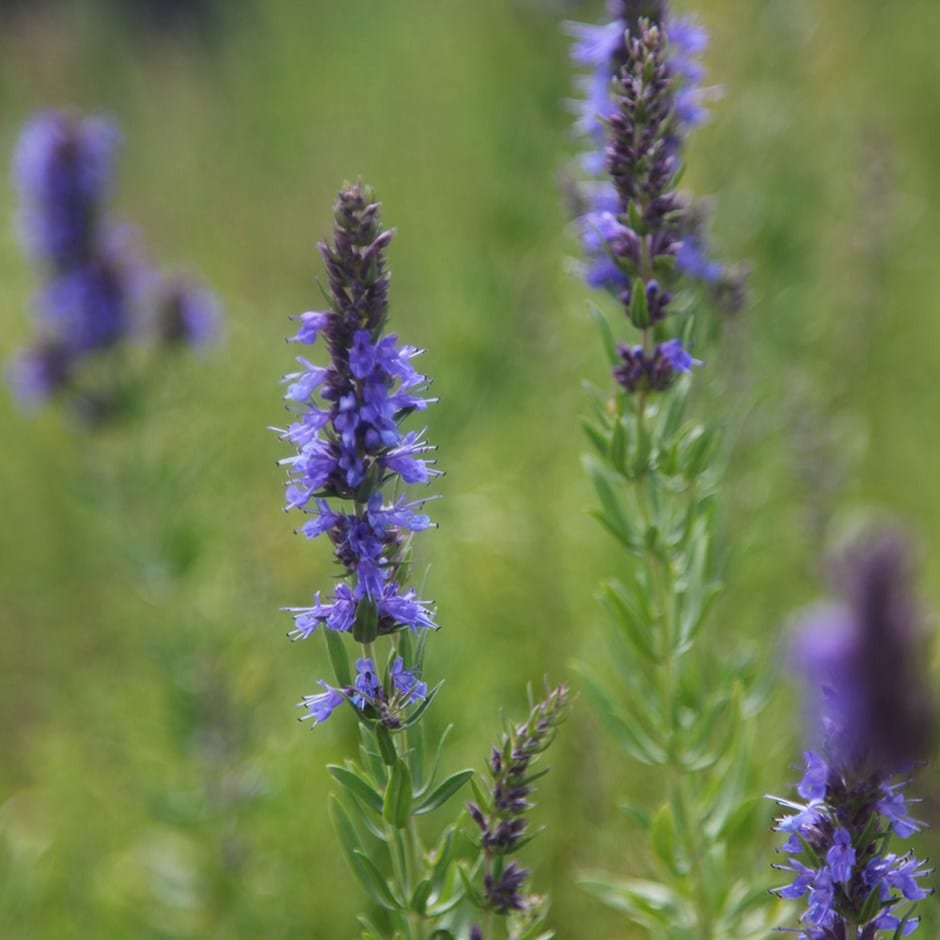16 herb garden ideas for productive (and beautiful!) beds, borders and planters
Styling tips, herb recommendations and more
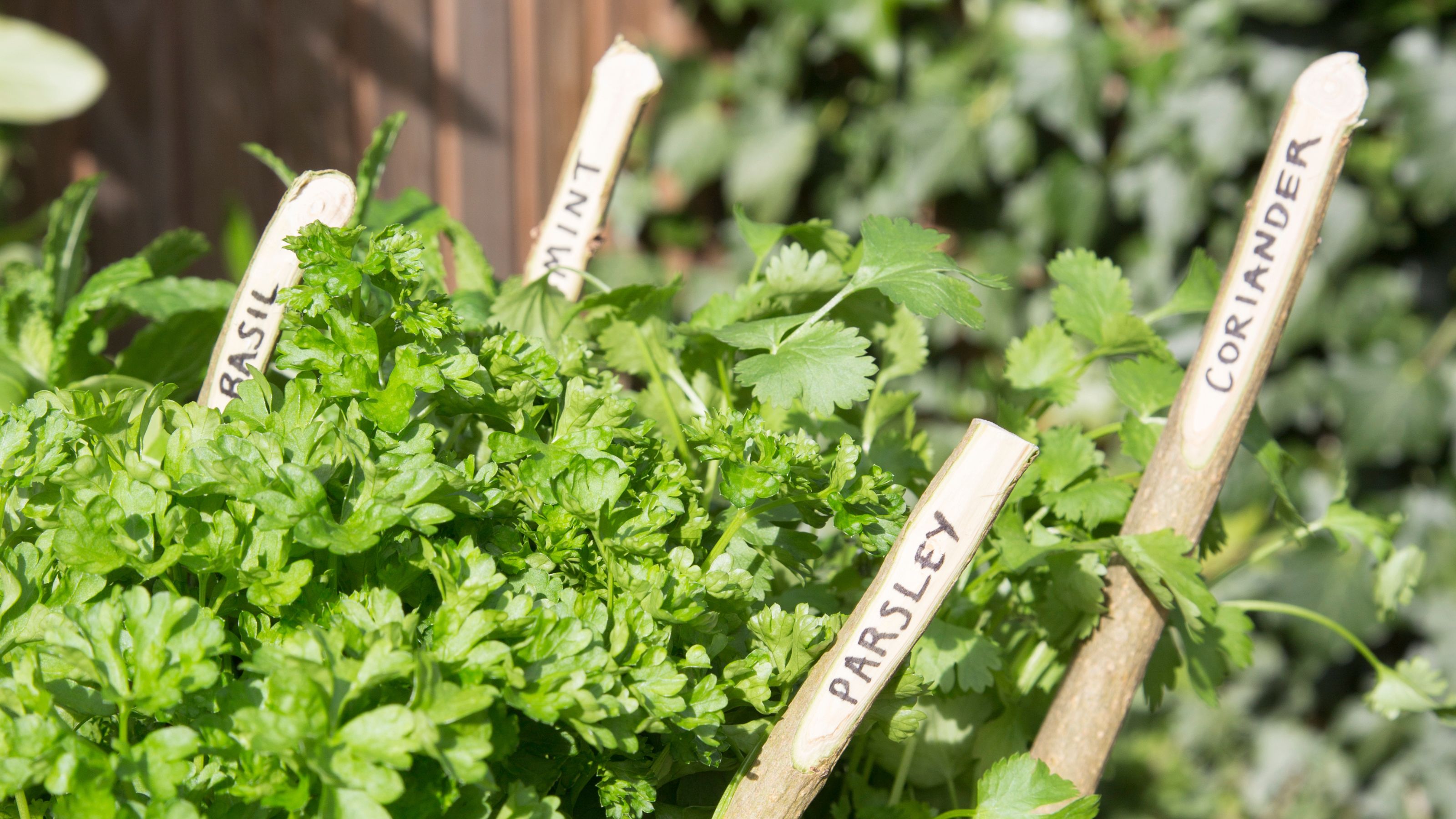
Sophie King
Looking for herb garden ideas? There are so many ways to grow these kitchen garden staples, so we thought we'd source a little inspiration.
Whether you're working with small garden ideas or looking for budget garden ideas, herbs are an affordable way to grow fresh ingredients for the kitchen. They make brilliant additions to pots, borders and beds, and they're usually pretty easy to grow.
We've rounded up our favourite herb ideas to inspire your next planting scheme.
1. Plant herbs in hanging baskets
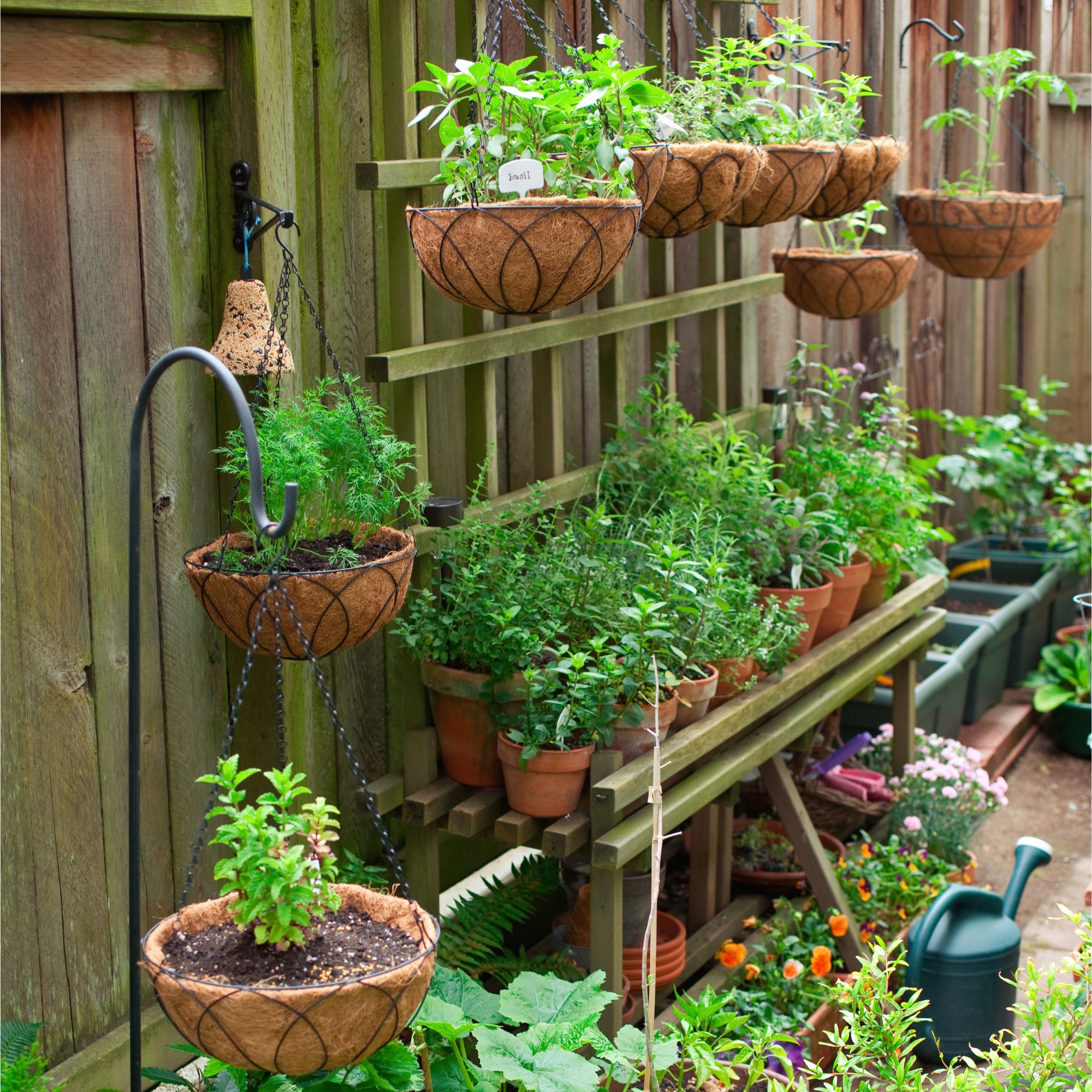
Hanging baskets are just for flowers and ornamental foliage – they're a brilliant place to grow herbs, too, especially those that love plenty of drainage (like Mediterranean varieties).
Basil, for example, is a great pairing with tomatoes in hanging baskets. As long as you avoid some of the most common hanging basket mistakes (like cramming too many plants into one basket), your hanging herb garden should stay nice and productive.
You can buy affordable hanging baskets from £9.95 at Amazon.
2. Keep it informal
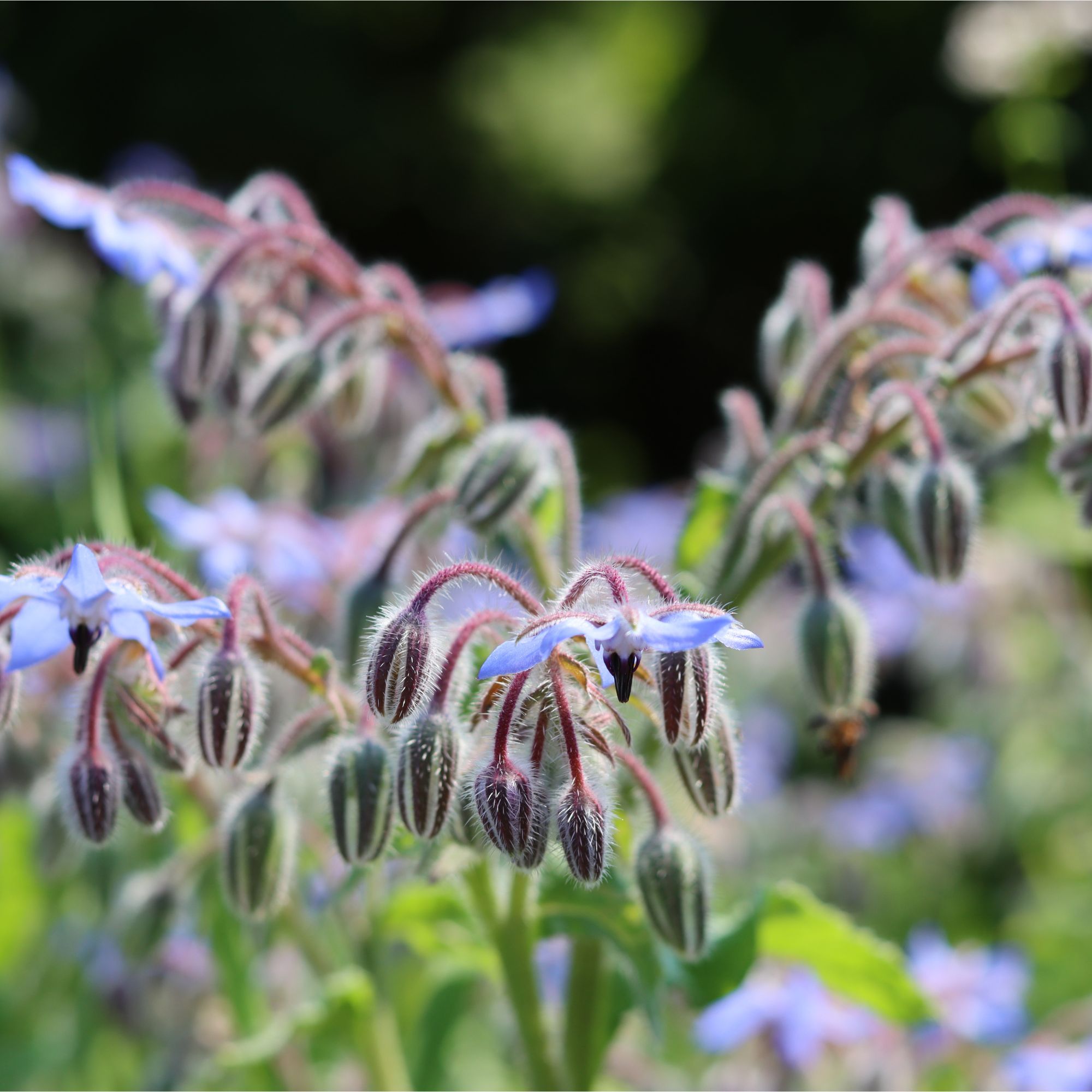
When we think of herb garden ideas, it's easy to envision a uniform patch of green leaves – but according to Thompson & Morgan's horticultural expert Annelise Brilli, wilder planting can be just as effective.
Sign up to our newsletter for style inspiration, real homes, project and garden advice and shopping know-how
'Herbs needn’t be confined to a traditional, formal herb garden,' she says. 'Borage, hyssop, and fennel are attractive plants in their own right, adding charm to informal borders.'
Where to buy borage, hyssop and fennel:
3. Add a raised trough to a patio or garden
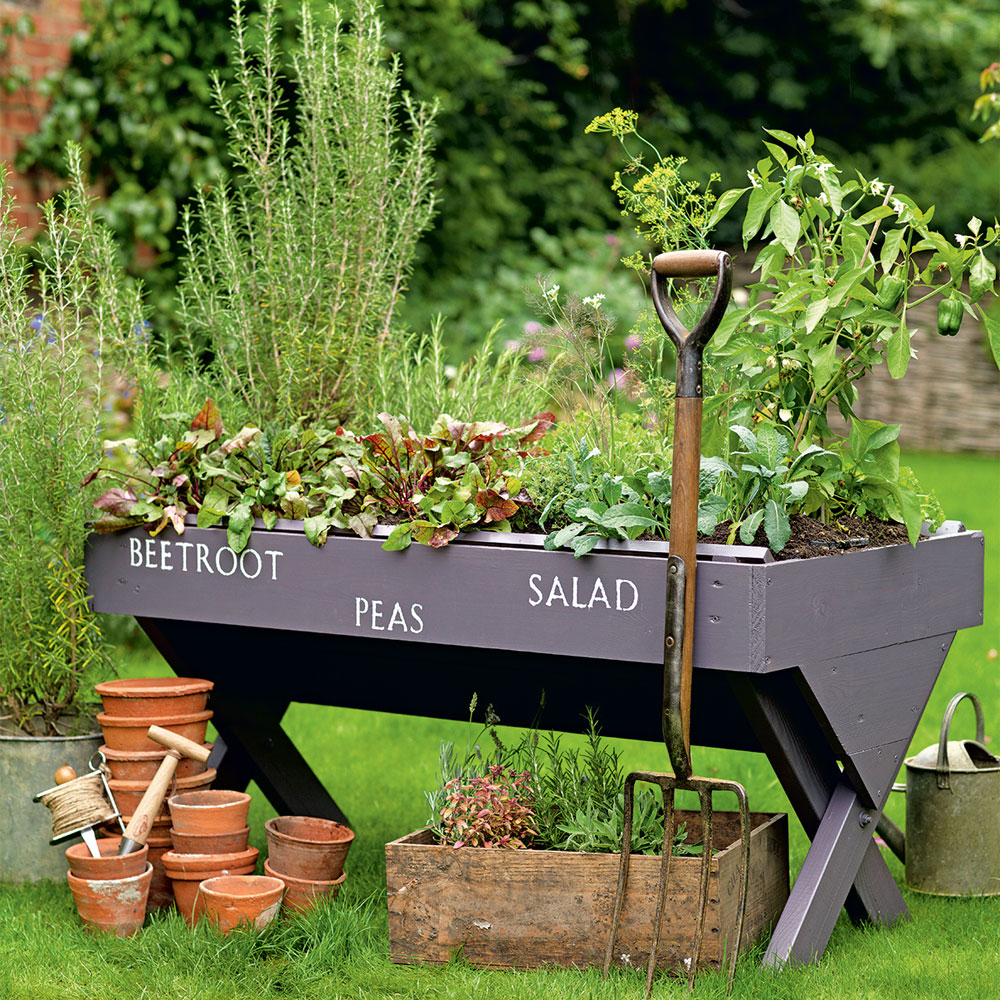
Positioned by the backdoor, a raised trough like this Vegetable Grow Bed from YouGarden is ideal for a wide range of gardens. Self-contained, you simply fill it with soil and add your plants.
Since the trough is around table height, it means you don't have to bend down to harvest or tend to your herbs. It also reduces the risks of garden plant pests, as the elevated position makes it more difficult for slugs and snails to work their way through your crops.
While this layout is great for most herbs, it should be avoided for fast-growers such as mint, which can choke and overwhelm the other herbs (it's one of the herbs you should never plant together with other varieties). Instead, opt for a pot of mint next to the raised bed.
For a more affordable alternative to a raised trough, learn how to upcycle a planter from a chest of drawers, which will not only provide the perfect place to grow herbs, but also add an interesting aesthetic dimension to your garden design.
4. Grow herbs in pots
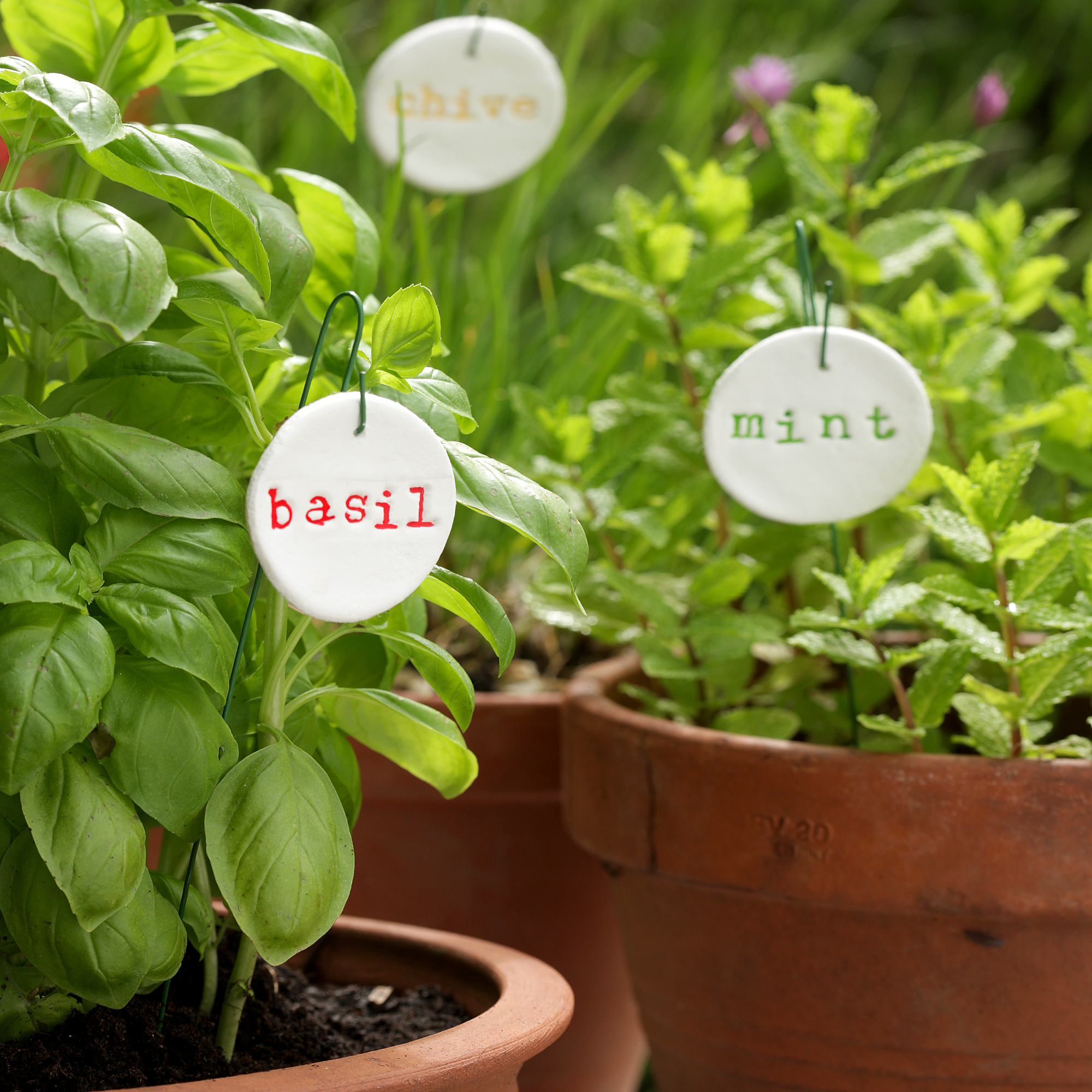
Perfect for placing around the patio, pots of herbs bring both decorative and practical benefits. Opt for terracotta designs to add a Mediterranean garden feel to the space.
You can also move them to different positions depending on their needs and the weather. Thyme, sage, rosemary, French tarragon and oregano are the sun-lovers, while parsley, chervil and sorrel take the shade. Remember to bring pots of tender herbs indoors for winter.
Why not take it a step further and combine multiple pots by learning how to build a herb planter?
5. Upcycle vintage tins
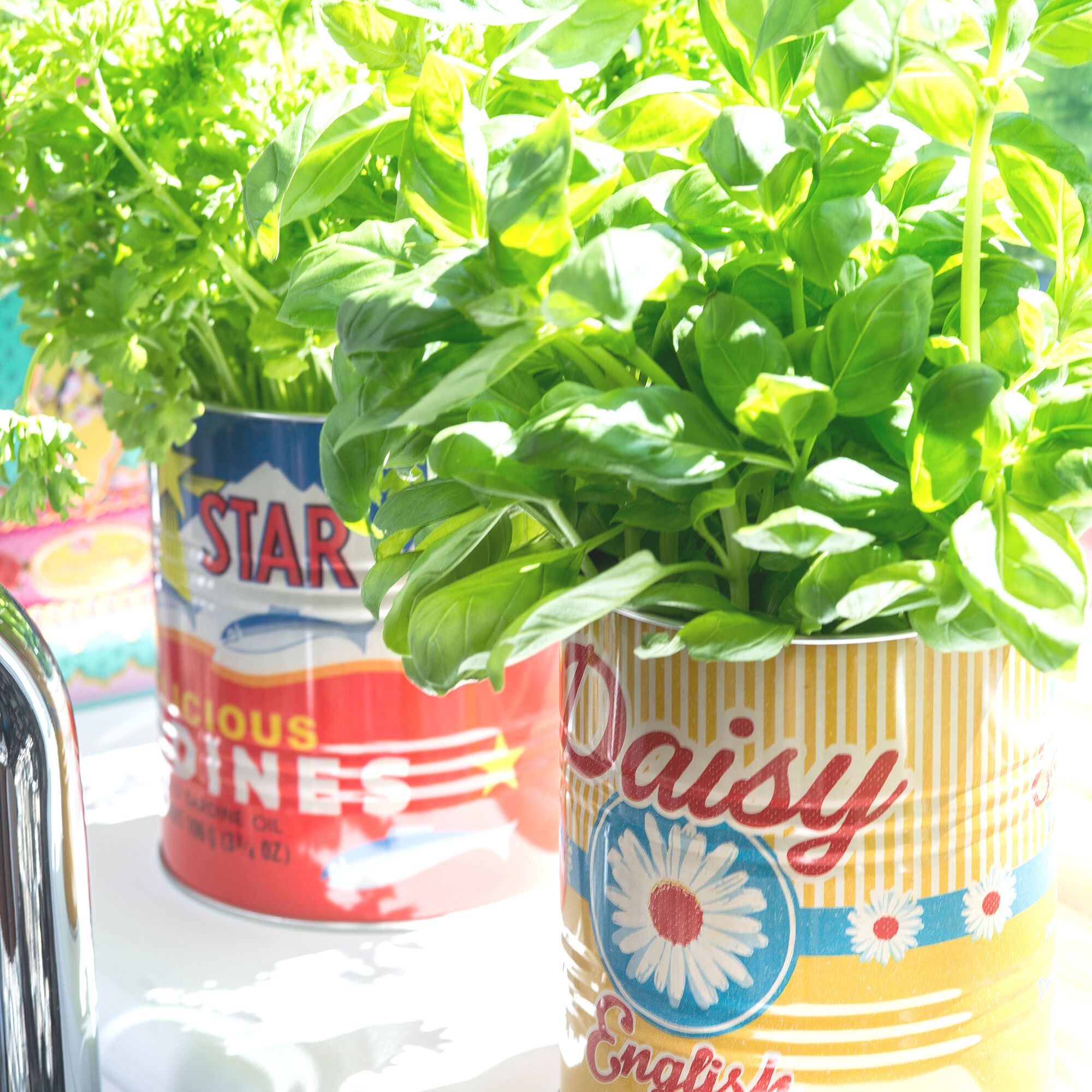
When it comes to adding herb garden ideas to your kitchen, aesthetics are everything – after all, nobody wants a load of dirty plastic ruining their kitchen ideas.
Instead, why not upcycle some beautiful vintage tins to house your herbs? Ensure that the tins are clean, and if you aren't using them to house an inner pot, ensure they have drainage holes.
6. Add pots of herbs to an outdoor kitchen

If you're embracing the outdoor kitchen trend, then this is the perfect place to add a couple of herb garden ideas. Simply position a few of your favourite pots alongside one of the best pizza ovens on the market so they are to hand when cooking.
If your kitchen area backs onto a trellis or wall, you could also use this space to house a few extra pots.
7. Try your hand at hydroponics
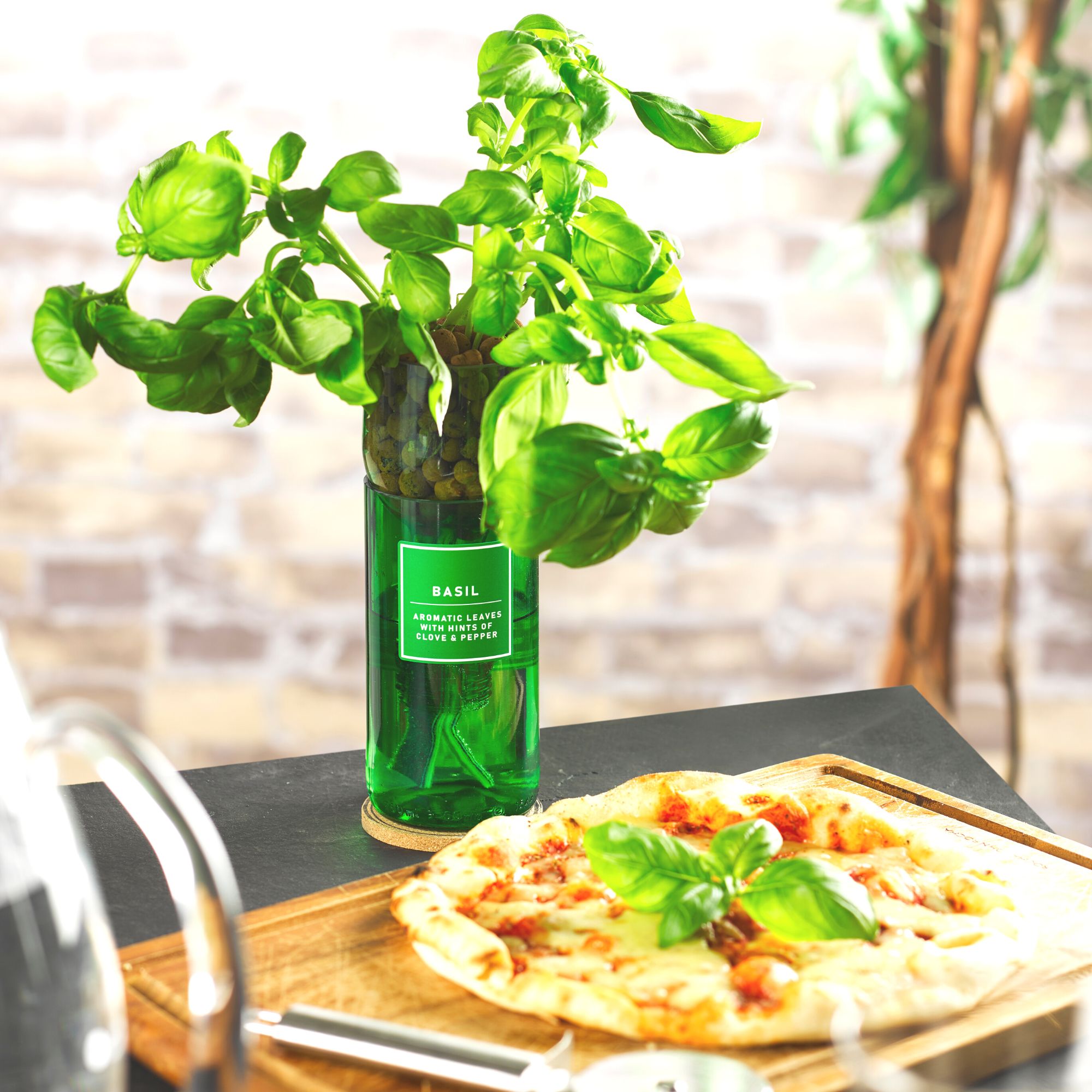
This soilless method of growing is ideal for kitchen herb garden ideas. Removing the presence of dirt on your windowsill, these beautiful jars enable you to grow herbs from seeds using only water.
'Aside from being made from recycled and biodegradable materials, our kits use the simplest (passive) form of hydroponics, meaning they are very low maintenance,' says Julian McAlpine, director at Hydro-herb.
'They help the herbs grow to their full potential, not only by providing an organic source of nutrients, but just as importantly, an oxygen-rich environment for the roots to help maximise nutrient uptake.'
8. Add a window box to a balcony
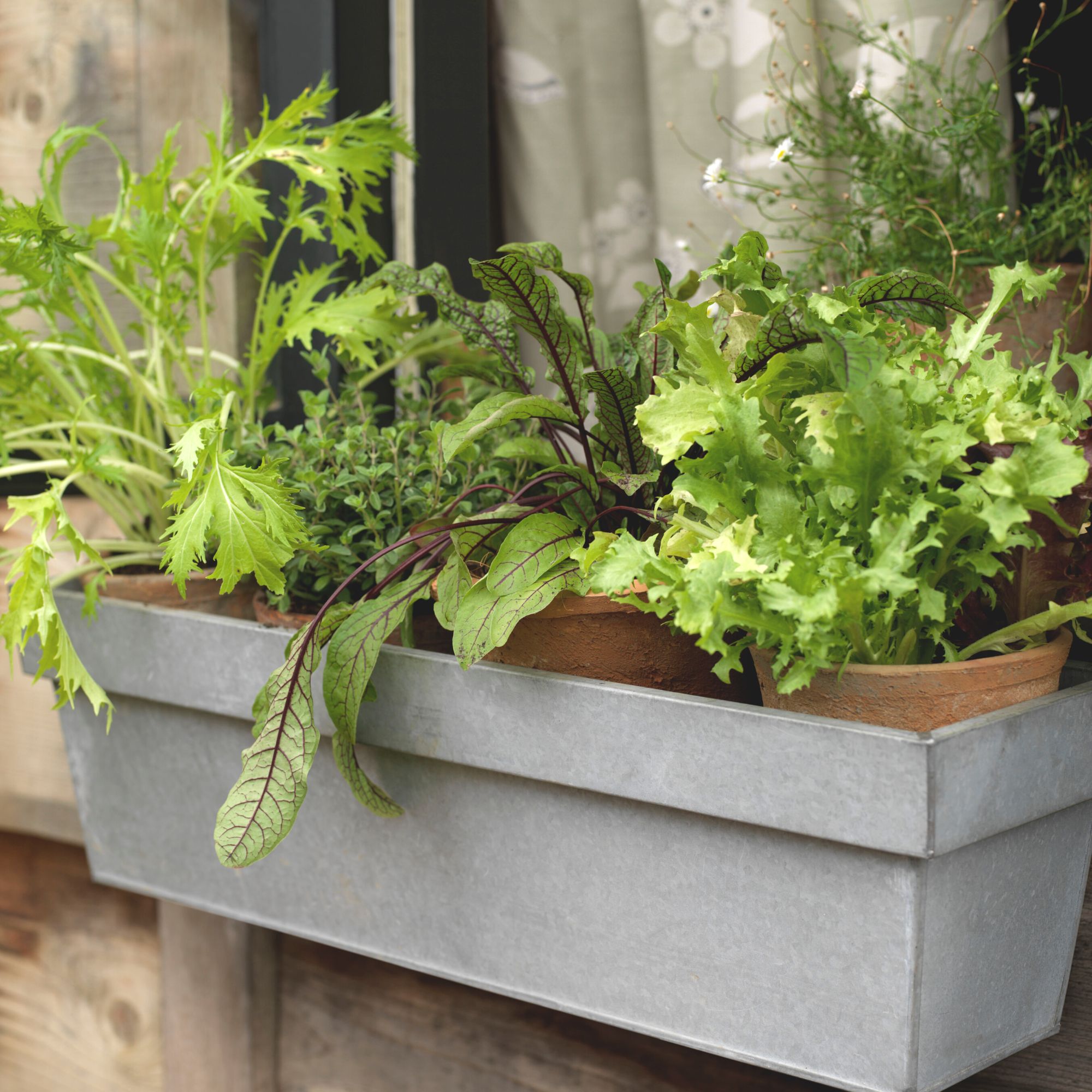
If you have a small garden or lack outdoor space altogether, all you need is a window box which can be attached to your wall, windowsill or balcony. Their compact nature and hanging design mean they don't take up any floor space, so planting ideas for window boxes are perfect for small gardens.
Plant your window box as you would a pot, ensuring each plant is securely bedded in and has enough space to grow. Then, be sure to follow our top tips for window box planting to ensure your new plants thrive.
If you are adding a window box to your balcony garden ideas, be mindful of its weight, especially if it is to be hung over the railings.
9. Try indoor vertical planting
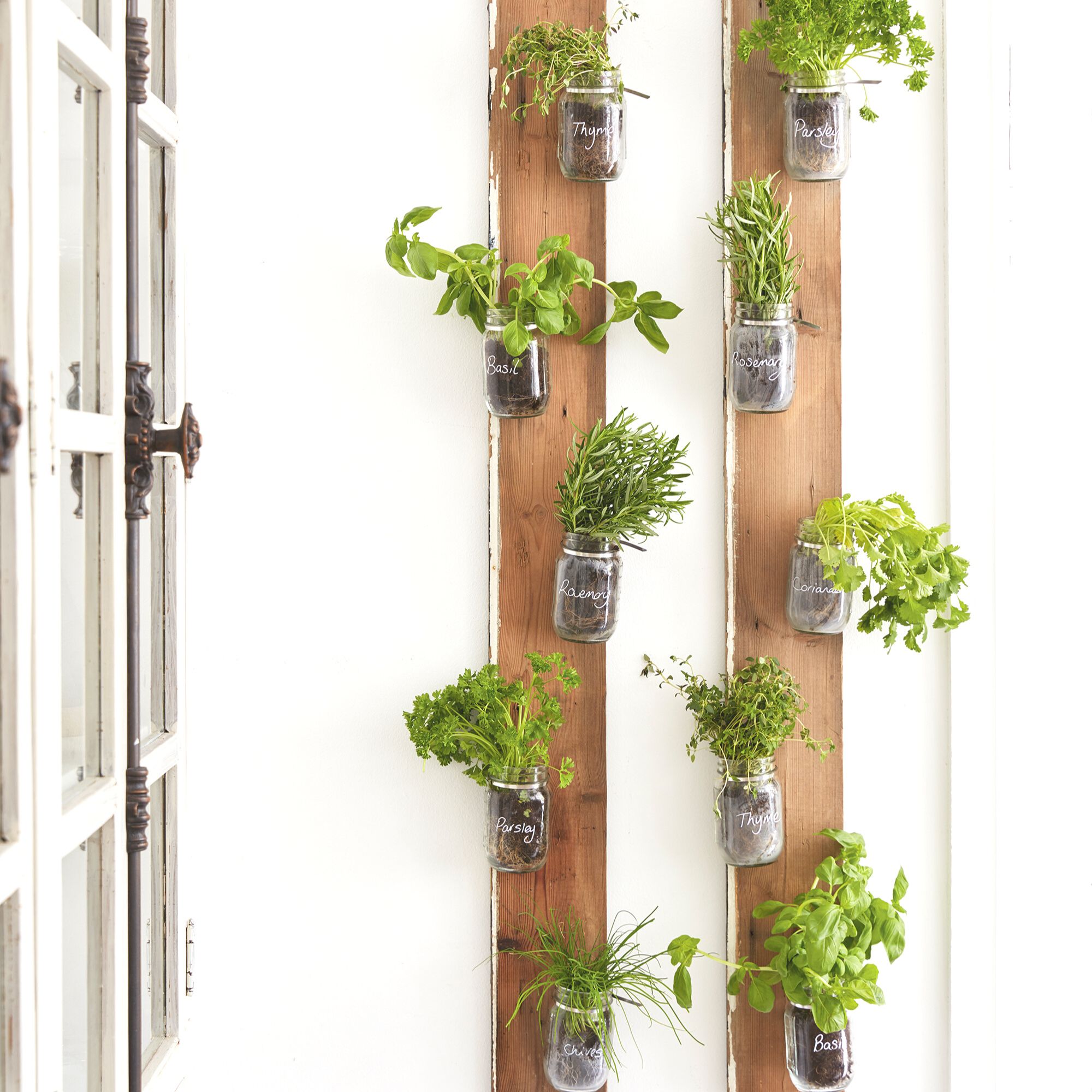
Save space by adding a vertical herb garden to your kitchen – it's like an edible take on living wall ideas. Not only is it practical, but it's a great way to bring foliage into this productive area of the home.
'All you need to do is wrap metal cable ties around the neck of a jar, leaving enough slack to slip over a cup hook screwed into a floorboard,' explains Ideal Home contributor Nicky Phillips. 'In each jar, add a layer of gravel for drainage before adding soil and herb seeds.'
Water the soil when it feels dry to the touch, and you'll have a beautiful indoor herb garden in no time.
10. Plant herbs in raised beds

If you have the space, raised beds are one of the best herb garden ideas. Not only do they help to contain your planting to a specific area of the garden, but they also allow you to control the growing conditions to help you get the most from your crops.
You can buy premade designs – like this Verve design from B&Q – but you'll be thrilled to know that even a novice DIY-er can learn how to build a raised garden bed for a fraction of the cost.
11. Add herbs to your borders
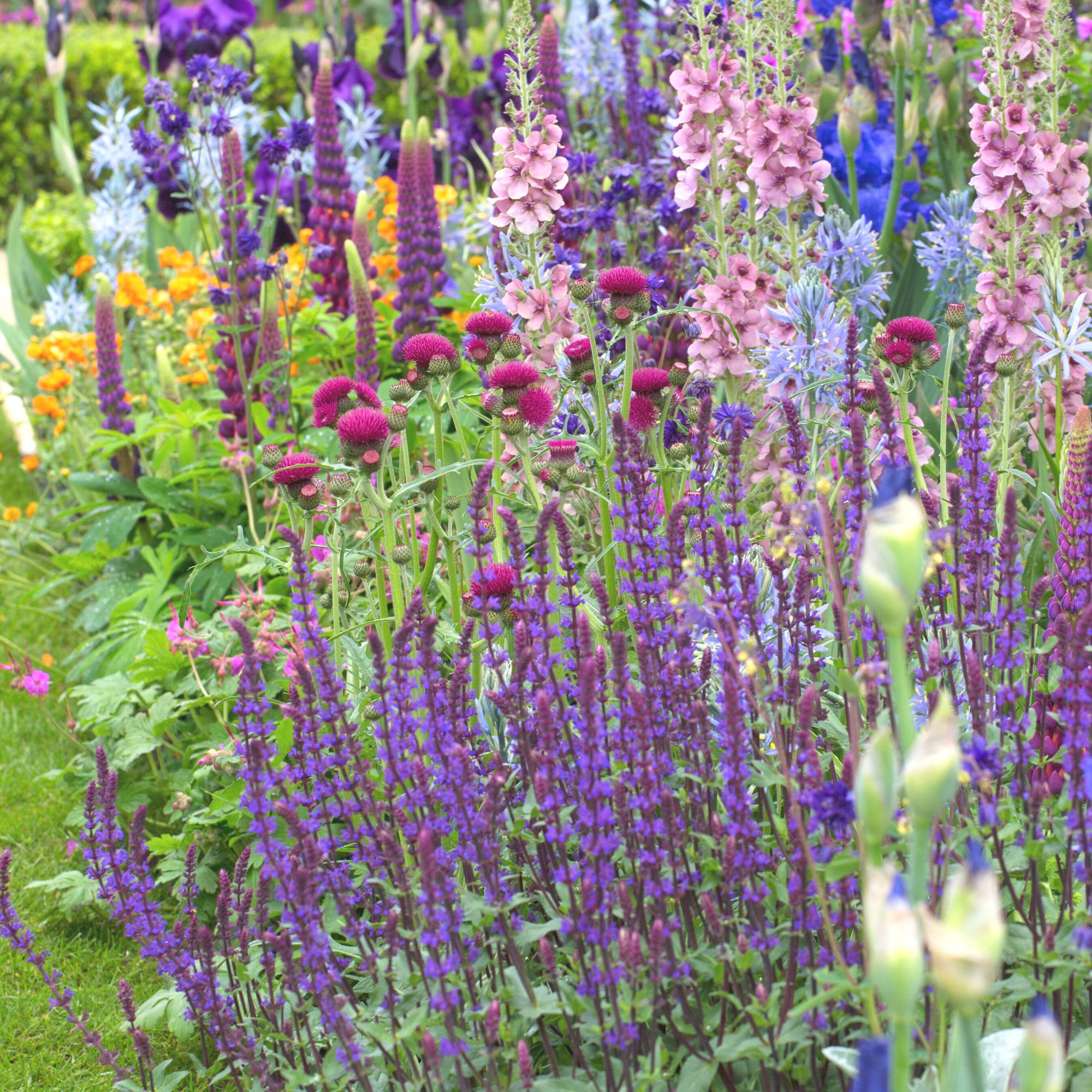
Not only are herbs very useful additions to the garden, but they are also beautiful.
Rosemary, with its tall, billowing stems and blue blooms, makes for an eye-catching addition, while voluptuous sage plants can provide the perfect foil to show-stopping blooms. If you plan to harvest your herbs, be sure to plant them within easy reach so you don't end up trampling your border to access them.
While most herbs can be added to your garden border ideas, avoid planting mint outside of a container. Given the chance, its fast-growing nature means you'll be weeding out mint plants from all over your garden.
Remember to make regular sowings to keep your crop alive and kicking for an easy garden idea.
12. Use herbs to line your vegetable patch
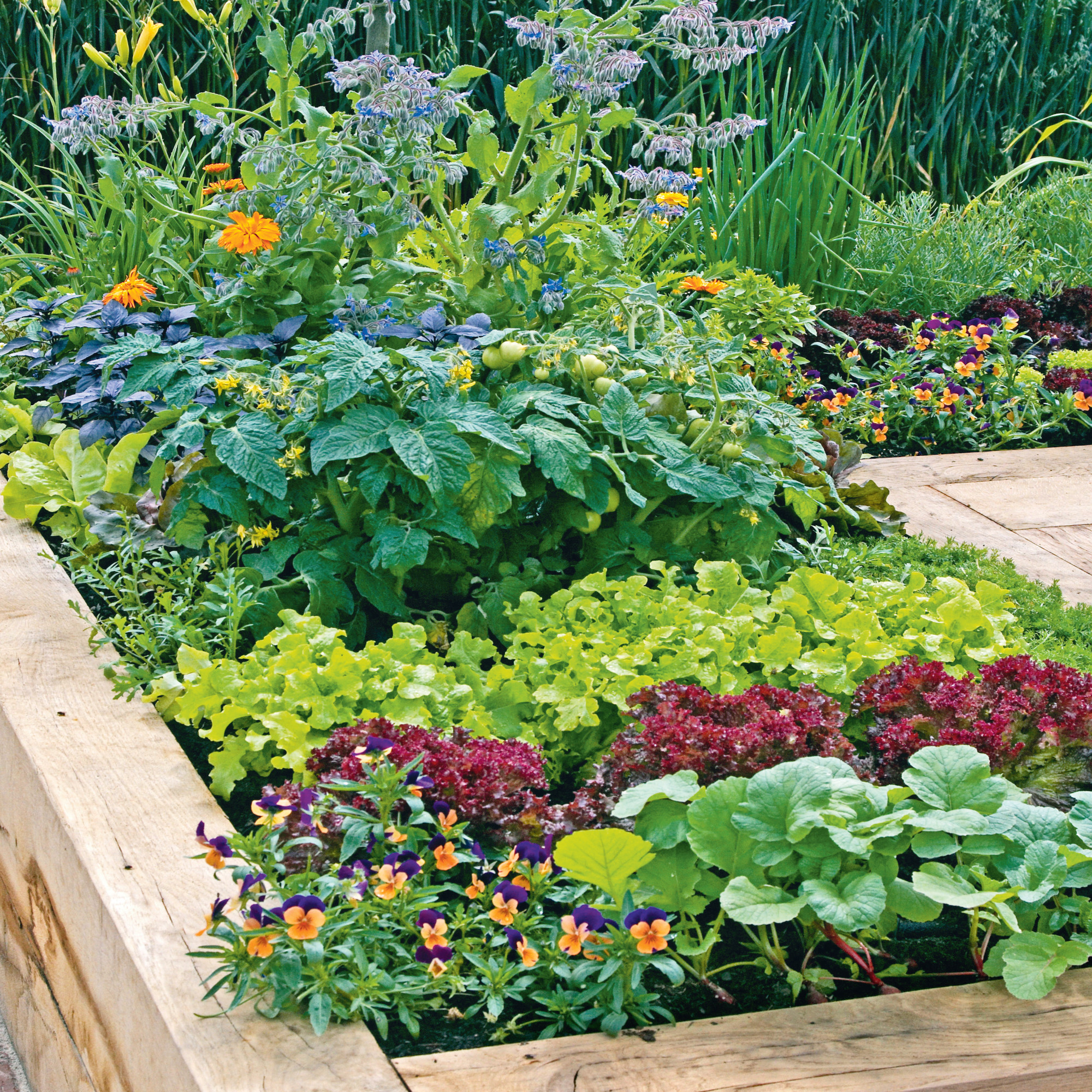
Lining the edges of your vegetable patch with herbs brings endless benefits. Not only does it mean you'll get to harvest delicious herbs alongside your veg, but it will also help to increase your yield.
Brilliant companion planting ideas, the herbs – when flowering – will attract pollinators.
'The flowers of many herbs such as mint, rosemary and thyme are well-liked by bees,' says Liam Lapping of Flowercard. The bees will then pollinate your fruiting crops such as beans, peas, tomatoes, cucumbers and peppers and increase your harvest.
Herbs also have strong aromas, and while it's one of the reasons that we love them, it proves an effective deterrent for insects and pests that can ravage your crops. They're among the best pest-repellent plants out there.
13. Grow herbs in gaps and cracks to prevent weeds
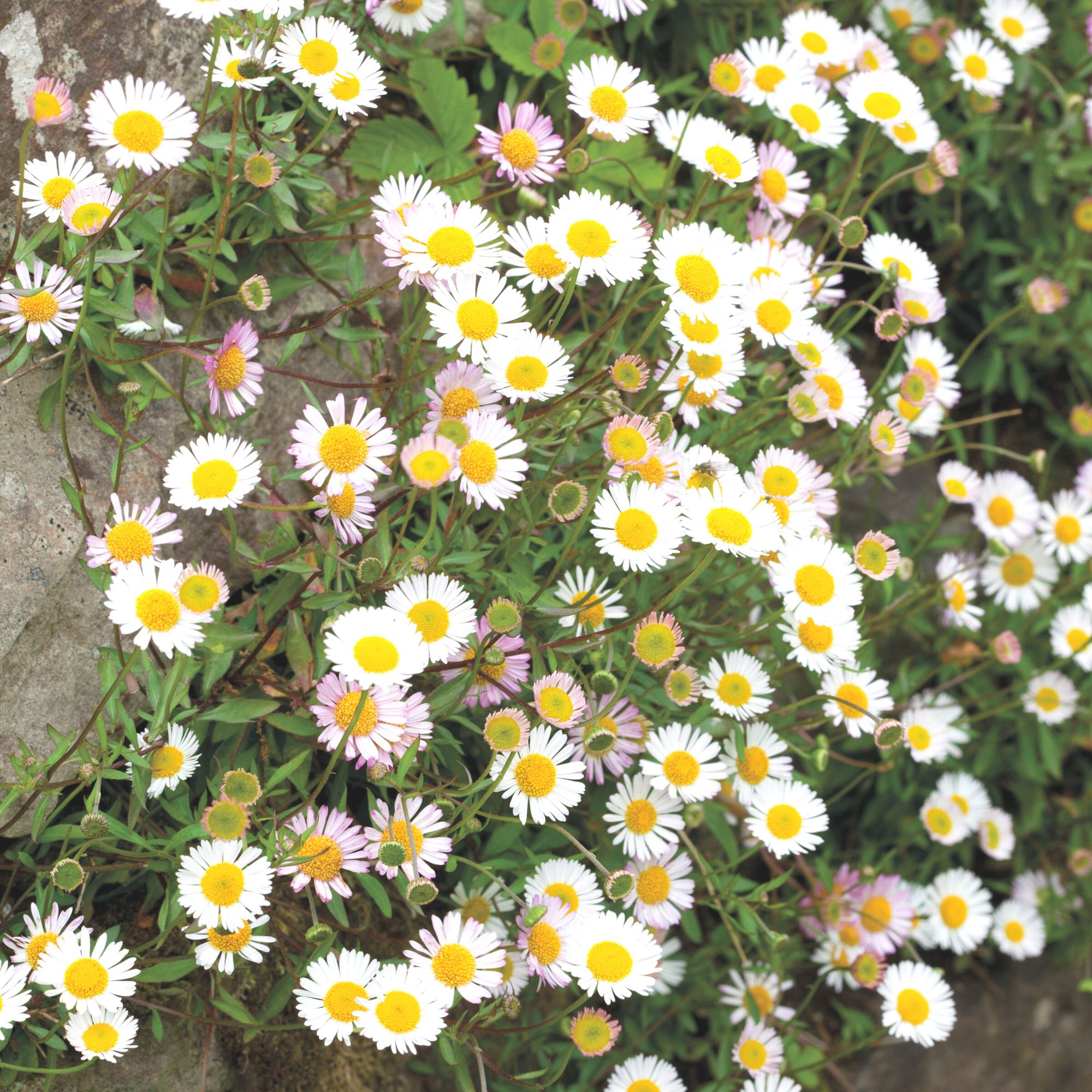
'You can plant beautiful flowers in your paving cracks and wall gaps, rather than letting the weeds establish themselves,' says gardening expert and author Sarah Raven.
'Whenever I have done this, it has created such a pretty cottage garden look that’s very low maintenance and adds a delicious scent to your garden if scented herbs or plants are used. There are many plants that this will work for, but a few suggestions would be Erigeron, chamomile, or lavender.'
For the best results, make sure you remove any weeds before planting.
'After this, simply mix your chosen seeds or small seedlings with a little compost, and push them into the crevice, watering lightly until they are established,' says Sarah. 'They’ll be fending for themselves in no time!'
14. Use herbs to flank a path for a sensory garden

As well as offering culinary benefits, growing herbs can help you to incorporate sensory garden ideas into your plot.
‘Plant them close to paths, or in elevated positions where you'll catch their scent as you brush past,' advises Heather Birkett, senior gardener at the National Trust’s Acorn Bank in Cumbria. 'Pick a sunny, sheltered courtyard to fill the air with their aroma, or plant them in a pot by the back door or on a windowsill.'
15. Grow herbs in the greenhouse
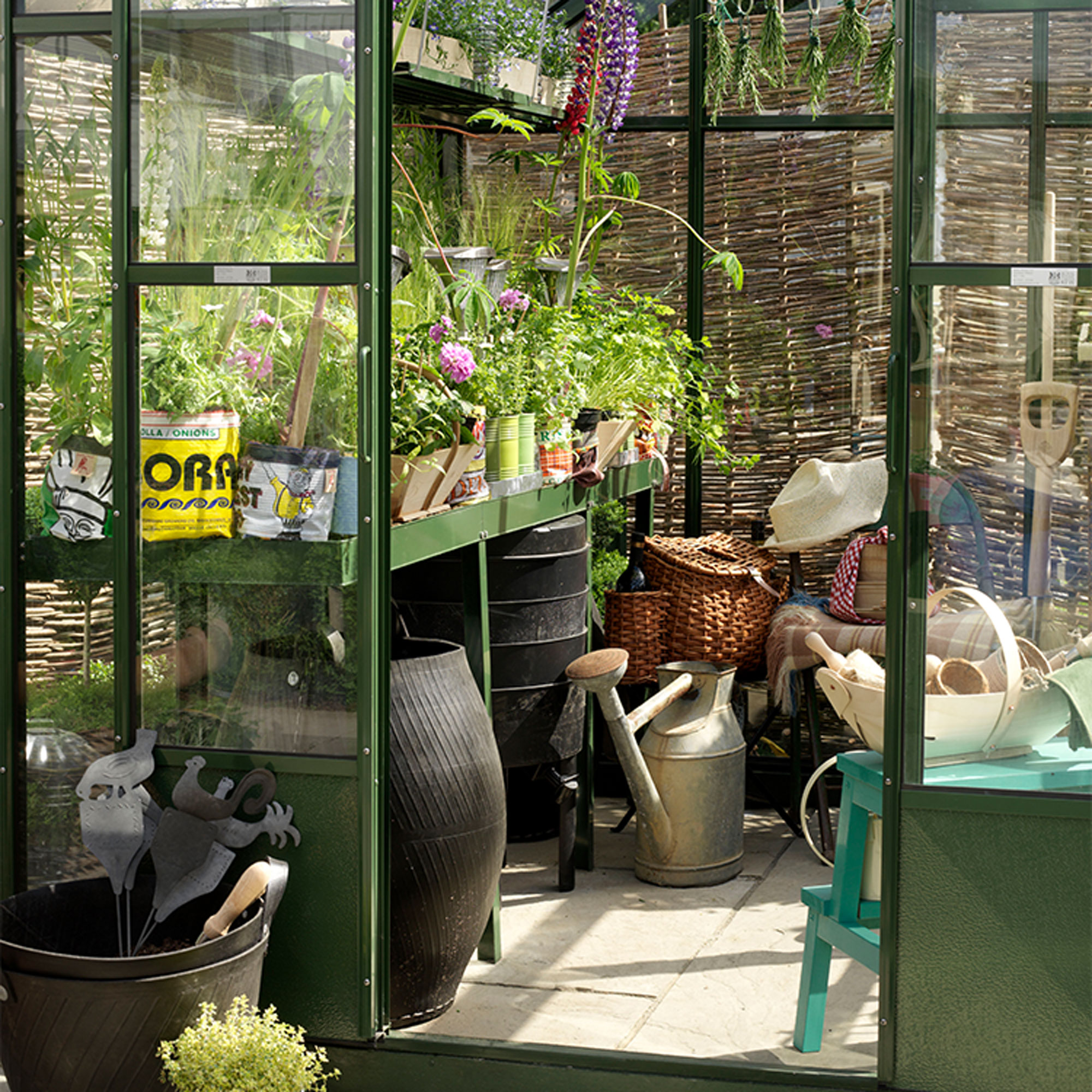
If you already have a greenhouse, then why not bring your herb garden ideas inside and enjoy a plentiful harvest?
'Growing herbs is a great way to take advantage of your greenhouse ideas all year round, and especially as a shelter from the winter frost,' says Tom Barry, CEO of Hartley Botanic.
'Herbs which are popularly used in cooking, like thyme, are often from warmer climates such as the Mediterranean, which means they are not completely hardy and suit a greenhouse well.'
Growing herbs in a greenhouse will increase your yield, meaning you'll need to know how to freeze fresh herbs to ensure that none of your harvests go to waste.
16. Create a built-in herb planter on a table

Haven't got enough room for a herb garden? You could give your existing garden table a simple update by jazzing it up with a built-in herb planter.
Expert Marianne Shillingford from Cuprinol showed us how to make a table planter so you’ll always have fresh herbs an arm’s length away for whatever dish is on the menu.
FAQs
What is the best layout for an herb garden?
The best layout for a herb garden will depend on where you're growing your herbs – in pots, beds, or a border, for example.
'Divide your herb garden into clearly defined sections for easy access, ideally using raised beds,' says Annelise from Thompson & Morgan. 'These offer excellent drainage and make both maintenance and harvesting more convenient.
'Since most herbs originate from the Mediterranean, plant them in the sunniest spot in your garden – ideally near the kitchen – so they are within easy reach for cooking.'
What herbs can be planted together?
Herbs that are commonly planted together are sage, thyme, rosemary, marjoram, lavender, and oregano, among others.
Many herbs do very well together in containers in their growing season. However, mixing different kinds in a single pot isn't as clear-cut as it sounds.
Make sure any herbs planted together have the same needs. Find out your herbs' growing requirements and group those that need lots of water and sun or less water and more shade together.
Which herb garden ideas will you be trying out this year?

Jenny is Senior Digital Editor and joined the team in 2021, working across Ideal Home, Real Homes, Homes & Gardens, Livingetc and Gardeningetc. Since getting on the property ladder, her passion for interior design and gardening has taken on a new lease of life. She loves collecting and salvaging unique items (much to her other half's despair) but sniffing out stylish home bargains is her one true love.
- Sophie KingGardens Editor




